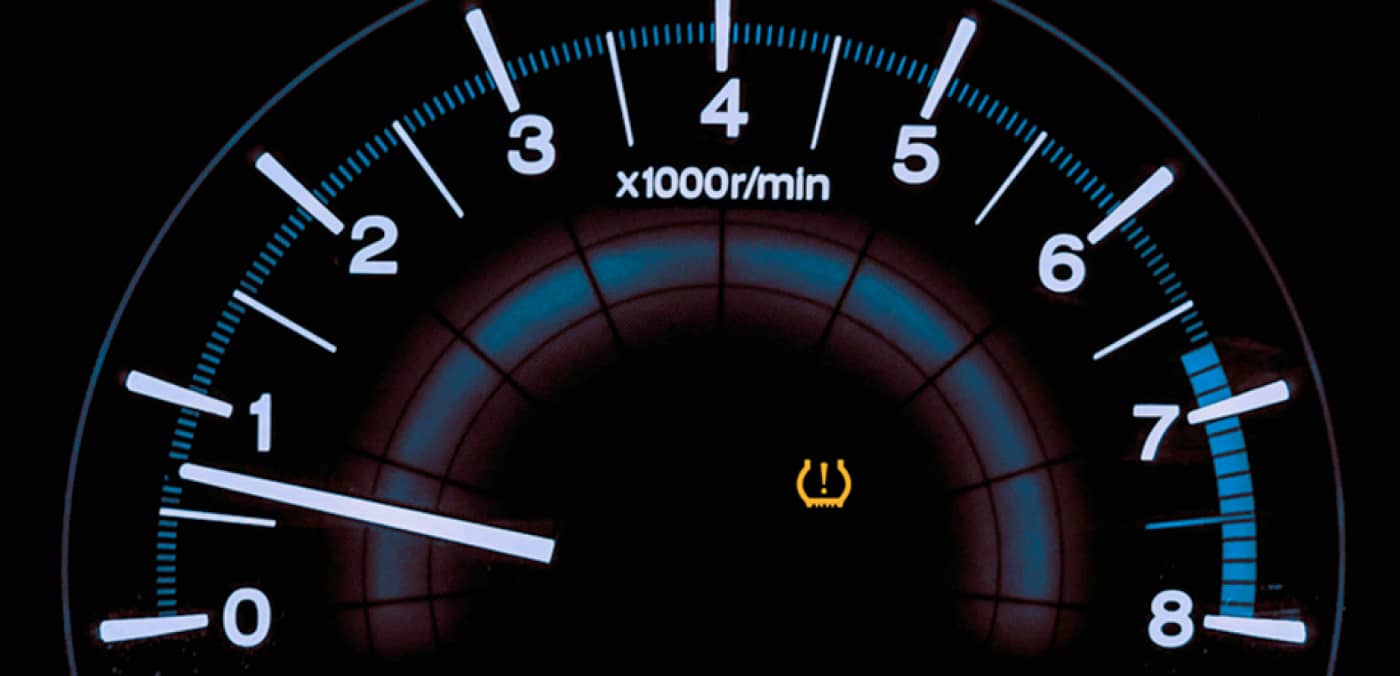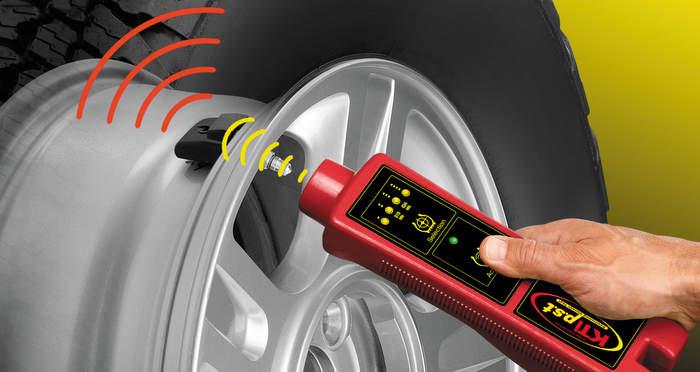A tire pressure sensor is a device that measures the pressure in a vehicle’s tires and sends a signal to the vehicle’s onboard computer. The computer then uses this information to adjust the air pressure in the tires, as needed.
Tire pressure sensors are devices that measure the air pressure in a vehicle’s tires. They are typically installed in the wheels, and they work by measuring the amount of air that is entering or leaving the tire. The sensor then sends a signal to the vehicle’s computer, which can be used to adjust the tire’s inflation level.
Tire pressure sensors are important because they can help prevent flats and other problems caused by under-inflated tires. They can also improve fuel economy and traction.
Animation on How Tire Pressure Monitoring System Works
Where is the Tire Pressure Sensor Located?
Most tire pressure sensors are located in the valve stem of the tire. They may also be located in the wheel itself or in the vehicle’s suspension. Tire pressure sensors work by measuring the air pressure in the tires and sending a signal to the vehicle’s computer.
This allows the computer to adjust the air pressure in the tires accordingly.
How Much Does It Cost to Replace a Tire Pressure Sensor?
If you need to replace a tire pressure sensor, the cost will vary depending on the make and model of your vehicle. On average, you can expect to pay between $50 and $200 for the sensor itself. However, keep in mind that you will also need to pay for labor costs associated with installing the new sensor.
In total, the cost of replacing a tire pressure sensor can range from $100 to $400.
How Often Do Tire Pressure Sensors Need to Be Replaced?
Tire pressure sensors are an important part of any vehicle, and they need to be replaced regularly in order to keep your car running properly. Most mechanics recommend that you replace your tire pressure sensor every two years or so, but it is always best to check with your specific manufacturer to see what they recommend.
If you live in an area with a lot of potholes or other rough roads, you may need to replace your tire pressure sensors more often than the average driver.
This is because the sensors can become damaged from all the bumps and jolts, which can lead to inaccurate readings. If you’re not sure how often you should be replacing your tire pressure sensors, ask your mechanic for advice.
What Happens When a Tire Pressure Sensor Fails?
When a tire pressure sensor fails, the driver may not be able to tell that their tires are low on air. If the sensor is faulty, it may give a false reading, or it may not work at all. This can lead to problems with the vehicle’s stability and handling, and it can also cause premature wear on the tires.
In some cases, a failed tire pressure sensor can even cause a blowout.

Credit: www.bridgestonetire.com
How Do Tpms Sensors Get Power
TPMS (tire pressure monitoring system) sensors get power from the vehicle’s battery. The sensor uses a small amount of power to transmit data to the TPMS receiver, which is then displayed on the vehicle’s dash panel.
The TPMS sensor is activated when the vehicle’s ignition is turned on.
The sensor will then take a reading of the tire pressure and send this information to the TPMS receiver. If the tire pressure is low, the receiver will display a warning message on the dash panel.
Where are Tire Pressure Sensors Located
If you’re like most drivers, you probably don’t think much about your car’s tire pressure sensors. But these small devices play a vital role in keeping you safe on the road. So where are they located?
Tire pressure sensors are usually located in the wheel well, near the tire. They may be mounted on the inside of the wheel or on the suspension. In some cases, they may be mounted on the brake caliper or steering knuckle.
The sensor consists of a pressure-sensitive switch that is connected to a warning light on the dash. When the pressure in one or more tires drops below a certain level, the switch is activated and the warning light comes on.
Most modern cars have tire pressure sensors that are linked to a central computer system.
This allows the system to keep track of each individual tire’s pressure and warn you if any of them get too low.
So next time you’re driving down the road, take a moment to think about your tire pressure sensors and how they’re helping to keep you safe!
Tyre Pressure Monitoring System
A tyre pressure monitoring system (TPMS) is an electronic system designed to monitor the air pressure inside the tyres of a vehicle. TPMS can be either direct or indirect. Direct TPMS uses sensors mounted inside the tyres to measure the tyre pressure, while indirect TPMS uses wheel speed sensors to estimate the tyre pressure.
Most modern vehicles are equipped with some form of TPMS. The purpose of TPMS is to alert drivers when their tyres are significantly under-inflated, which can lead to unsafe driving conditions. Under-inflated tyres can cause premature tyre wear, decreased fuel efficiency, and increased braking distances.
In extreme cases, they can even cause a blowout.
While TPMS is not required by law in all jurisdictions, many new vehicles come standard with some form of the technology. For vehicles that don’t have factory-installed TPMS, there are aftermarket systems available that can be installed by a qualified mechanic.
How Does Tpms Know Which Tire is Which
Tire pressure monitoring systems (TPMS) are designed to alert the driver when a tire is low on air. The system does this by keeping track of the pressure in each tire and comparing it to the vehicle’s recommended tire pressure. If one or more tires are low, the TPMS will warn the driver so that they can take action to inflate the tires.
One question that we often get asked is how TPMS knows which tire is which. After all, if you have a flat tire, you don’t want the system to tell you that your spare tire is low on air!
Here’s how it works: each TPMS sensor has a unique identifier that helps the system keep track of which sensor is installed in which position.
When you first get your vehicle, the sensors are programmed with their positions so that the system knows which sensor corresponds to which tire.
If you ever need to replace a sensor, simply install the new one in the same position as the old one and program it with the same identifier. That way, your TPMS will know which sensor is installed in which position and won’t get confused.
How Do Wireless Tire Pressure Sensors Work
Wireless tire pressure sensors are an important innovation in the automotive industry. They allow drivers to monitor their tire pressure from inside their vehicle, without having to physically check each tire. This can save a lot of time and hassle, especially if you have a flat tire or low pressure in one of your tires.
There are two main types of wireless tire pressure sensors: those that use radio frequency (RF) technology, and those that use Bluetooth technology. RF-based systems are the most common, and they typically come with a display unit that mounts on your dash. The display unit shows the pressure in each tire, as well as the temperature of each tire.
Some models also include a warning light that comes on when one or more tires are low on air.
Bluetooth-based systems are newer and less common, but they offer some advantages over RF-based systems. For one, they often come with an app that you can install on your smartphone.
This allows you to monitor your tires’ pressures from anywhere – not just from inside your car. Additionally, some Bluetooth-based systems come with built-in leak detectors. If a tire starts losing air rapidly, the system will alert you so you can take action before it becomes completely flat.
How Do Tpms Sensors Communicate
Most vehicles on the road today are equipped with some form of Tire Pressure Monitoring System (TPMS). TPMS sensors are designed to monitor the air pressure in a vehicle’s tires and provide drivers with real-time information about their tire pressure. There are two main types of TPMS sensors: direct and indirect.
Direct TPMS sensors are mounted inside the tire, while indirect TPMS sensors are mounted on the wheel.
Both direct and indirect TPMS sensors use radio frequency (RF) technology to communicate with a vehicle’s onboard computer system. The data collected by the sensor is transmitted to the computer, which then uses algorithms to calculate the air pressure in each tire.
If one or more tires are low on air, the system will trigger an alert for the driver.
While most modern vehicles come equipped with some form of TPMS, there are still many drivers who are not aware of how these systems work. By understanding how TPMS sensors communicate with a vehicle’s onboard computer system, drivers can be sure that their tires are always properly inflated and they can avoid potential problems on the road.
What is Tpms Light
Since 2008, all vehicles sold in the United States are required to have a Tire Pressure Monitoring System (TPMS). This system uses sensors to monitor the air pressure in your tires and warn you when they get too low.
The TPMS light is usually located on the dash and looks like a exclamation point inside a circle.
If this light comes on, it means that one or more of your tires is low on air.
You should stop and check your tires as soon as possible. Use a tire gauge to check the pressure in all four tires.
If any of them are low, add air until they reach the recommended pressure level.
If your TPMS light stays on after you’ve checked and inflated your tires, there may be something wrong with the sensor or another part of the system. You should take your vehicle to a mechanic to have it checked out.
Changing Wheels With Tire Pressure Sensors
If your vehicle is equipped with tire pressure sensors, you’ll need to take a few extra steps when changing your wheels. Here’s what you need to know about changing wheels with tire pressure sensors:
1. When removing the old wheel, be careful not to damage the sensor.
2. The new wheel must be compatible with the sensor.
3. The sensor must be properly mounted on the new wheel.
4. The sensor must be initialized by a qualified technician using special equipment.
Conclusion
As cars have become more technologically advanced, so have their tires. Tire pressure sensors were introduced in the late 1990s and are now standard equipment on most new vehicles.
A tire pressure sensor is a small electronic device that is mounted on the inside of a tire.
It monitors the air pressure inside the tire and sends a signal to the car’s computer when it drops below a certain level.
The car’s computer then displays a warning message on the dash board, alerting the driver that one or more tires are low on air. The driver can then add air to the tires as needed.
Tire pressure sensors are an important safety feature because they help prevent flat tires and blowouts. They also help improve fuel economy by ensuring that tires are properly inflated.

